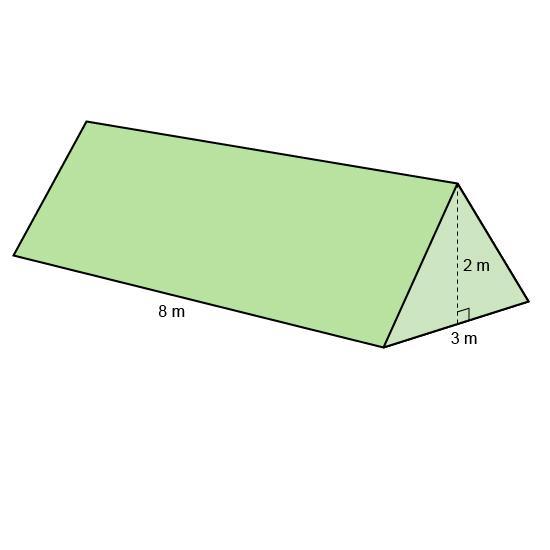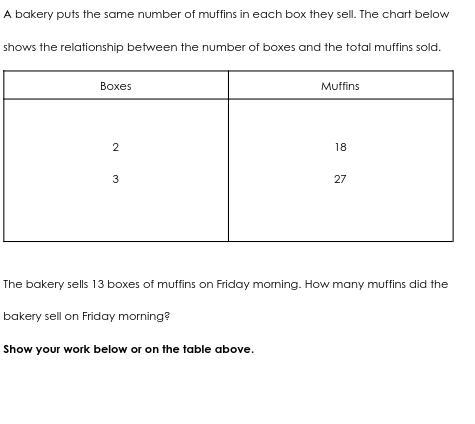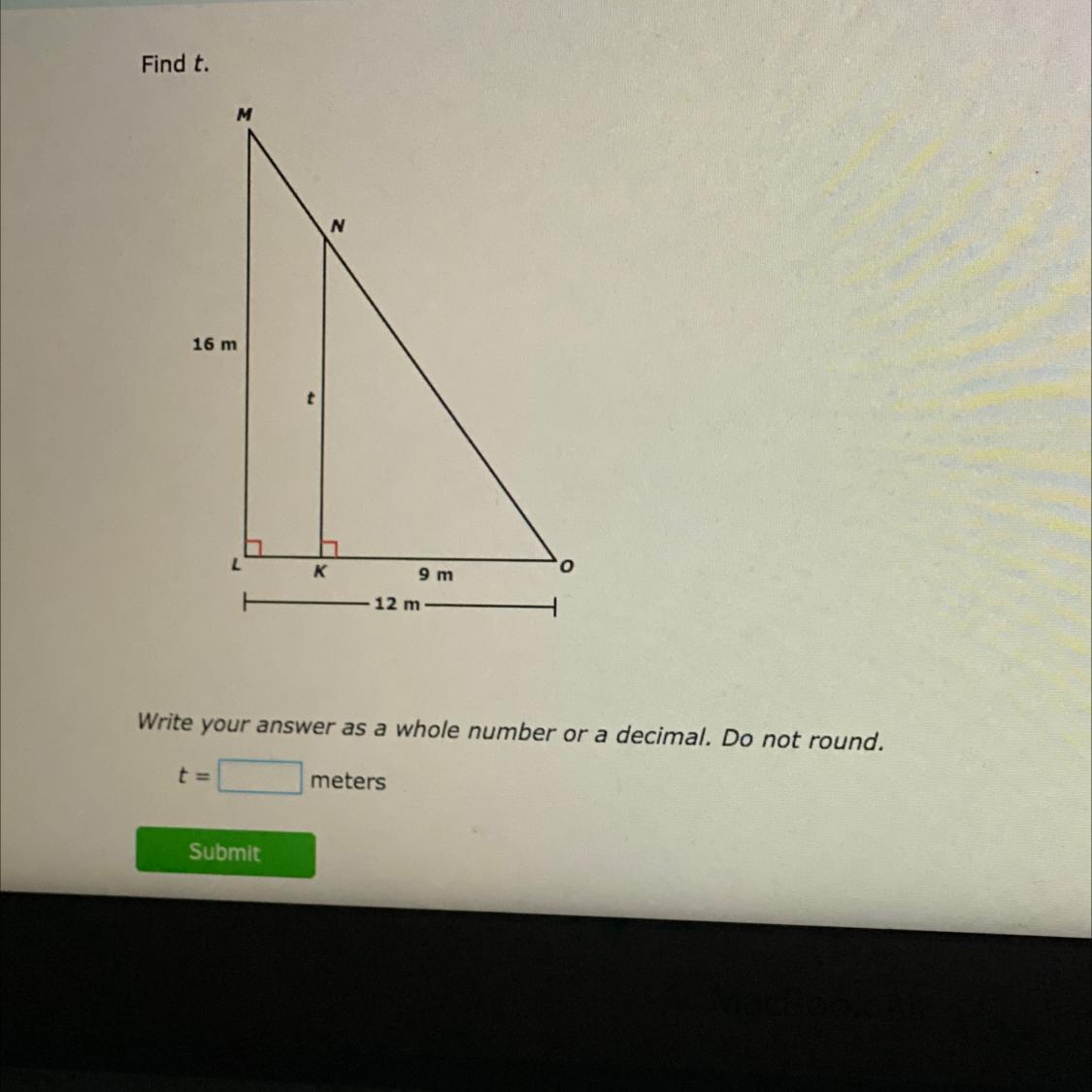A high-performance composite flywheel rotor can spin anywhere between 30,000 and 100,000 revolutions per minute. What
is the range of degrees through which the composite flywheel can travel in a minute? Write your answer in scientific
notation.
Answers
Answer:
Step-by-step explanation:
1 revolution will equal 360 degrees
Because of that 30,000 revolution would be 10,800,000 degrees
100,000 rev would equal 36,000,000 degrees
The range through which the composite flywheel rotates in one minute be denoted by ' F ' . (1.08 x 107)° F (3.6 x 107)°
The range of degrees the composite flywheel can travel in a minute is 2.52 × 10⁷ degrees/minute.
What is the Scientific Notation?Scientific Notation is a way of writing down in the easy form of very large or very small numbers.
The range of revolutions per minute for the rotor is from 30,000 to 100,000, which means that the rotor can spin a total of 70,000 revolutions per minute (100,000 - 30,000 = 70,000).
To find the range of degrees through which the composite flywheel can travel in a minute, we need to multiply the range of revolutions by the number of degrees in one revolution.
A full revolution is 360 degrees, so the composite flywheel can travel in a minute :
70,000 revolutions/minute × 360 degrees/revolution = 25,200,000 degrees/minute
This can be written as 2.52 × 10⁷ in scientific notation.
Learn more about the Scientific Notation here :
https://brainly.com/question/20533245
#SPJ2
Related Questions
What is the equivalent to the product below when x>_0?
√5x² •√15x²
Answers
√(5x²) • √(15x²) = √(5x² * 15x²)
Using the property of square roots that √(a * b) = √a * √b, we can simplify further:
√(5x² * 15x²) = √(5 * 15 * x² * x²)
Next, we simplify the numerical part:
√(5 * 15 * x² * x²) = √(75 * x² * x²)
Since x ≥ 0, x² is always non-negative, so we can remove the square root:
√(75 * x² * x²) = x * x * √75
Finally, we simplify the square root of 75:
x * x * √75 = x² * √75
Therefore, the equivalent expression is x² * √75 when x ≥ 0.
B
E
7
4
3
1
-2 -1 0
D
Determine the line of reflection.
O Reflection across x = 4
Reflection across y = 4
Reflection across the x-axis
Reflection across the y-axis
3
4
C
D'
8
E'
9
10
B'
A'
11
Answers
Answer: 10
Step-by-step explanation: it is a 5+ 5 =
When using blocking to deal with extraneous factors in an experiment, a
different number of treatments should be applied to each of the groups.
• A. True
• B. False
Answers
Answer:
false
Step-by-step explanation:
i just took the test and guessed on it to help u ( i got it right) :p
the average age of 9 boys in a class is 15years,if another boy of age 13years join the class, what is the average age of the 10boys
Answers
HELPP PLEASE!!!!!
PYRAMIDS Hermán is building a pyramid out of
blocks for an engineering class. On the top level,
there is one block. In the second level, there are
5 blocks. In the third, there are 9 blocks. This
pattern continues for the rest of the levels down to
the 18th level at the base of the pyramid. Use this
information to determine how many blocks will be
in the 13th level of the pyramid.
41 blocks
A.
B.
45 blocks
C.
49 blocks
D.
53 blocks
Answers
Answer:
I think C 45 blocks are the right answer.
Answer: B 45
Step-by-step explanation: bc 9 x 5 +45
Please answer immediately I beg.
A pyramid and a cone have the same base area and height. The volume
of the pyramid is 175m³. What is the volume of the one? Explain your answer.
Answers
The volume of cone is 175 m³
Firstly,
Volume of Pyramid.
The volume (V) of a pyramid is
V = ⅓Ah
Data:
V = 175m³
Calculation:
175 = ⅓× A× h
Ah = 175*3
Ah = 525m³
Secondly,
The volume (V) of a cone is
V = ⅓Ah
Data:
Ah = 525 m³
Calculation:
V = ⅓ A× h
V = 175 m³
Know more about volumes,
https://brainly.com/question/17101095
#SPJ1
If George is 33 1/3% richer than Pete, than Pete is what percent poorer than George?
Answers
Answer:
25%
Step-by-step explanation:
George is 33\(\frac{1}{3}\)% (\(\frac{100}{3}\)%) richer than Pete. Let Pete's percentage of wealth be 100%.
Thus George percentage of wealth = 100% + \(\frac{100}{3}\)%
= \(\frac{400}{3}\)%
= 133\(\frac{1}{3}\)%
Pete's percent poorer than George can be determined by;
= \((\frac{100}{3})\) ÷ \((\frac{400}{3} )\) × 100
= \((\frac{100}{3})\) × \(\frac{3}{400}\) ×100
= 0.25 × 100
= 25%
Pete is 25% poorer than George.
The diameter of the base is the cone measured 8 units. The height measures 6 units.
What is the volume of the cone?
A) 24 π cubic units
B) 32 π cubic units
C)48 π cubic units
D)64 π cubic units

Answers
the bookstore sold 8 books for 66$ at that rate how much would one book be.
Answers
area of a floor 19m by 12 m is
Answers
Answer:228m
Step-by-step explanation: 19m x 12m = 228m
Answer: 228m
Step-by-step explanation: Just multiply 19m by 12m. That's how you find area.
The table below lists the number of layers of centimeter cubes, along with the number
of cubes in each layer, in each of four rectangular prisms.
LAYERS OF CUBES IN RECTANGULAR PRISMS
Prism
Number of
Layers
Number of Cubes
in Each Layer
R
3
8
S
5
5
T
6
5
U
7
4
Which rectangular prism has the greatest volume?
A Prism R
B Prism S
C Prism T
D Prism U
Answers
Answer:
The answer would be C: Prism T
Step-by-step explanation:
R=3x8=24 cubes
S=5x5=25 cubes
T=6x5=30 cubes
U=7x4=28
Therefore, T is biggest
What are the domain and range of the function f(x)=-x+3-2? domain: -3 -2 domain: -3 -3 range: y<-2 domain: x>-3 range:y>-2
Answers
For given function function f(x)=-x+3-2, the domain is x > -3 and the range is y ≤ 2. So, correct option is D.
The function f(x)=-x+3-2 is a linear function in the form y=mx+b, where m is the slope and b is the y-intercept. In this case, the slope is -1 and the y-intercept is 1. Therefore, the graph of the function is a straight line that intersects the y-axis at (0,1) and has a slope of -1, meaning that it decreases by 1 for every 1 unit increase in x.
The domain of the function is the set of all possible values of x for which the function is defined. Since there are no restrictions on the value of x in the equation f(x)=-x+3-2, the domain is all real numbers, or (-∞, ∞).
The range of the function is the set of all possible values of y that the function can output. In this case, the lowest possible value of y occurs when x approaches positive infinity, and the highest possible value of y occurs when x approaches negative infinity. Therefore, the range is all real numbers less than or equal to 2, or y ≤ 2.
So, the domain is x ∈ (-∞, ∞) and the range is y ≤ 2. Alternatively, the domain can also be expressed as x > -3, since that is the minimum value of x at which the function is defined.
Correct option is D.
To learn more about domain and range click on,
https://brainly.com/question/15136070
#SPJ1
Complete question is:
What are the domain and range of the function f(x)=-x+3-2?
A) domain: -3 -2
B) domain: -3 -3 range: y<-2
C) domain: x>-3 range:y>-2
D) domain : x>-3 range: y ≤ 2
What is the volume of the triangular prism?
please help!! quickly its a test a look at the picture
7th grade math

Answers
The area of the triangle is:
A = (base•height) : 2 = (3•2) : 2 = 3 m2
So the volume is:
V = 3 • 8 = 24 m3
The dot plot shows the time trials of an experiment. Each number on the dot plot represents the amount of time, in seconds, it took to complete a trial. How many time trials were recorded during the experiment? Enter the answer in the box. time trials A number line ranging from 15 to 25 with two dots over 15, three dots over 17, two dots over 19, two dots over 20, one dot over 21, four dots over 23, one dot over 24, and three dots over 25.
Answers
There were 18 time trials recorded during the experiment.
To determine the number of time trials recorded during the experiment, we count the total number of dots on the dot plot.
According to the given information, we have:
- Two dots over 15
- Three dots over 17
- Two dots over 19
- Two dots over 20
- One dot over 21
- Four dots over 23
- One dot over 24
- Three dots over 25
By adding up these counts, we get:
2 + 3 + 2 + 2 + 1 + 4 + 1 + 3 = 18
Therefore, there were 18 time trials recorded during the experiment.
To more on dot-plot:
https://brainly.com/question/15853311
#SPJ8
needed help asap!!!!!!

Answers
please help i just need to get this done.

Answers
The equation of the line in slope-point form, slope-intercept form, and standard form are y = -100x + 1250, y - 1250 = -100(x-0) and 100x + y = 1250 respectively
How to write the equation of a line in point-slope form?
The equation of a line in point-slope form is given as y − y 1 = m ( x − x 1),
where ( x 1, y1 ) is the point given and m is the slope
m = y2-y1 / x2-x1, where x1 = 0, y1 = 1,250 and x2 = 5, y2 = 750
m = 750-1250 / 5-0
m = -500/5 = -100
Thus, the slope-point form:
y − y 1 = m ( x − x 1 )
y - 1250 = -100(x-0)
The equation of a line in slope-intercept form is given as y = mx+c,
where (x, y) is the point given, m is the slope and c is the y-intercept
where x1 = 0, y1 = 1,250 and m = -100
y = mx + c
1250 = -100(0) + c
c = 1250
Thus, the equation in slope-intercept form is:
y = -100x + 1250
The equation of a line in standard form is given as ax + by = c, where a, b, c are real numbers
Rewrite y = -100x + 1250. Thus, the equation in standard form is:
100x + y = 1250
Learn more about equation of a line on:
https://brainly.com/question/13763238
#SPJ1
Write the percent as a decimal.
9%
HELP PLS
Answers
Answer:
9%=9/100=0.09 is in decimal
Answer:
0.09 = 9%
Step-by-step explanation:
9%= \(\frac{9}{100}\)
move the decimal twice left.
0.09
this is confusing ok so 1.if there r 2 boys in a class for every 3 girls what would be the ratio for it and 2.if Seth bought a 12-ounce jar of something that is $3.60 what is the unit price?
Answers
2. You do 3.60 / 12 so it’s 0.30$ per ounce
Find the next number in the sequence 32, 48, 56, 60, 62
Answers
Answer: divide 2 from what you got from the last one
Step-by-step explanation:
32+16=48 so then divide 16 by 2 or subtract 8
The next number is 63.
Sequence:A Sequence is a list of things (usually numbers) that are in order.\({ \ 1,2,3,4,.. \right\}\)
is a very simple sequence (and it is an infinite sequence)
We can compute like as,
\(32 + 16 = 48\)
\(48 + 8 = 56\) { Half of \(16 = 8\)}
\(56 + 4 = 60\) { Half of \(8 = 4\)}
\(60 + 2 = 62\) { Half of }
\(62 + 1 = 63\) { Half of \(2 = 1\)}
\(63 + 0 = 63\) { Half of \(1 = 0\)}
Learn more about the topic sequence:
https://brainly.com/question/17105654
guidance counselor compiles data relating a student's English grade to the number of languages studied. The results are shown in the frequency table below.
A 4-column table with 3 rows titled English grade versus number of languages studied. The first column has no label with entries English only, English and another language, total. The second column is labeled 90 or above with entries 15, 110, 125. The third column is labeled lower than 90 with entries 105, 270, 375. The fourth column is labeled total with entries 120, 380, 500.
The counselor converts the frequency table to a conditional relative frequency table by column.
A 4-column table with 3 rows titled English grade versus number of languages studied. The first column has no label with entries English only, English and another language, total. The second column is labeled 90 or above with entries 0.12, 0.88, 1.0. The third column is labeled lower than 90 with entries 0.28, 0.72, 1.0. The fourth column is labeled total with entries X, Y, 1.0.
What is the value of X?
0.16
0.20
0.24
0.40
Answers
Answer:
C:0.24
Step-by-step explanation:
GIVEN THE GRAPH OF A FUNCTION, IDENTIFY ALL ITS FEATURES

Answers
Answer:
This is a nonlinear function.
Not in s straight line.
Step-by-step explanation:
Linear functions are straight lines, however a nonlinear function is a curved line. At the end of the line, the line curves a little bit.
The graph of a function is non linear function because it is not a straight line.
The given graph is a non linear function.
The graph represents a non-linear function, which means that it does not follow a straight line.
The relationship between the x-values and the corresponding y-values is not linear.
The graph is rising from right to left, indicating that as the x-values decreases, the corresponding y-values increase.
To learn more on Graph click:
https://brainly.com/question/17267403
#SPJ2
Find the area of the figure. Use 3.14 for π.

Answers
Answer:
Round to hundredths if necessary.Rectangle topped by a semicircle - ScieMce.
Step-by-step explanation:
ind the area of the figure. Use 3.14 for π. Round to hundredths
PLEASEE I NEED HELP ASAP

Answers
Answer:
r>3
Step-by-step explanation:
im honestly not sure but i beleive its -17?
there are 30 cupcakes in a tin. 16 of the cupcakes are iced of which 3 contain walnuts. 5 cupcakes are neither iced nor contain walnuts. work out the probability that the cupcake picked at random contains walnuts
Answers
The probability that the cupcake picked at random contains walnuts is given as follows:
0.4 = 40%.
How to calculate a probability?A probability is calculated as the division of the desired number of outcomes by the total number of outcomes in the context of a problem/experiment.
There are 30 cupcakes in a tin, hence the total number of outcomes is given as follows:
30.
The number of cupcakes with walnuts is given as follows:
3 that are also iced.30 - (16 + 5) = 9 that are not iced.Hence the probability that the cupcake picked at random contains walnuts is obtained as follows:
p = (3 + 9)/30
p = 12/30
p = 0.4.
More can be learned about probability at https://brainly.com/question/24756209
#SPJ1
Please can someone find X! Please!

Answers
Explanation:
24^2+10^2= 676
Sqrt 676 = 26
what is the difference between ANOVA and Z-test Hypothesis
Answers
The difference between ANOVA and Z-test Hypothesis is the Z-test is employed to contrast the averages of single or dual populations, whereas ANOVA is utilized for assessing the means across three or more clusters.
How to determine the differenceThe Z-test becomes possible in the comparison of the mean of a sample to that of the population. It evaluates if there is statistical relevance in the difference between the mean of a sample and the mean of the whole population
In contrast, ANOVA is employed to contrast the averages of three or more separate groups. This assesses if there is a noteworthy distinction in the averages of said groups. The F-statistic in ANOVA is computed by assessing the disparity in variability between groups and the variability within groups.
In a nutshell, the Z-test is employed to contrast the averages of single or dual populations, whereas ANOVA is utilized for assessing the means across three or more clusters.
Learn more about ANOVA at: https://brainly.com/question/25800044
#SPJ1
please help me asap!!!!

Answers
Answer:
12
Step-by-step explanation:
t/9=16/12
12t=144
t=12
Estimate:
19 + 15.76 =
..

Answers
Estimate the diameter of a circle with a circumference of 80 feet
1. 12.74 feet
2. 25.48 feet
3. 40 feet
4. 50.96 feet
Answers
Answer:
2) 25.48
The diameter of the circle d = 25.48
Step-by-step explanation:
Step(i):-
we know that the diameter of a circle d = 2 r
The circumference of the circle = 2π r
Given that the circumference of the circle = 80 feet
Step(ii):-
The circumference of the circle = 2π r = 80
⇒ π (2r )= 80
⇒ πd = 80
⇒ \(d = \frac{80}{3.14}\)
d = 25.477
Final answer:-
The diameter of the circle d = 25.477
From the given graph, identify the following;
A. Direction of the graph
B. Vertex
C. Line of symmetry
D. X and Y intercepts
E. Maximum/Minimum values
